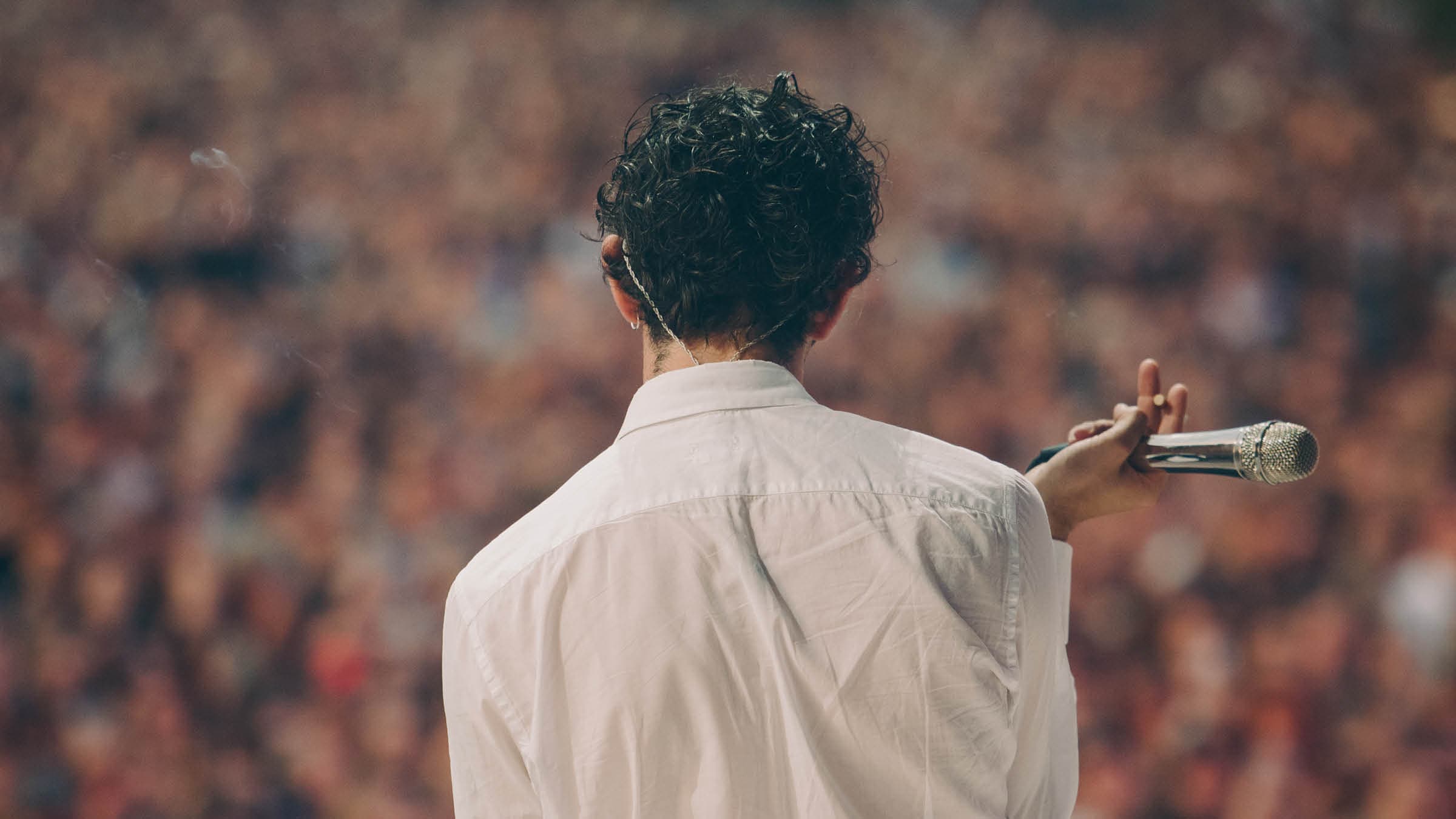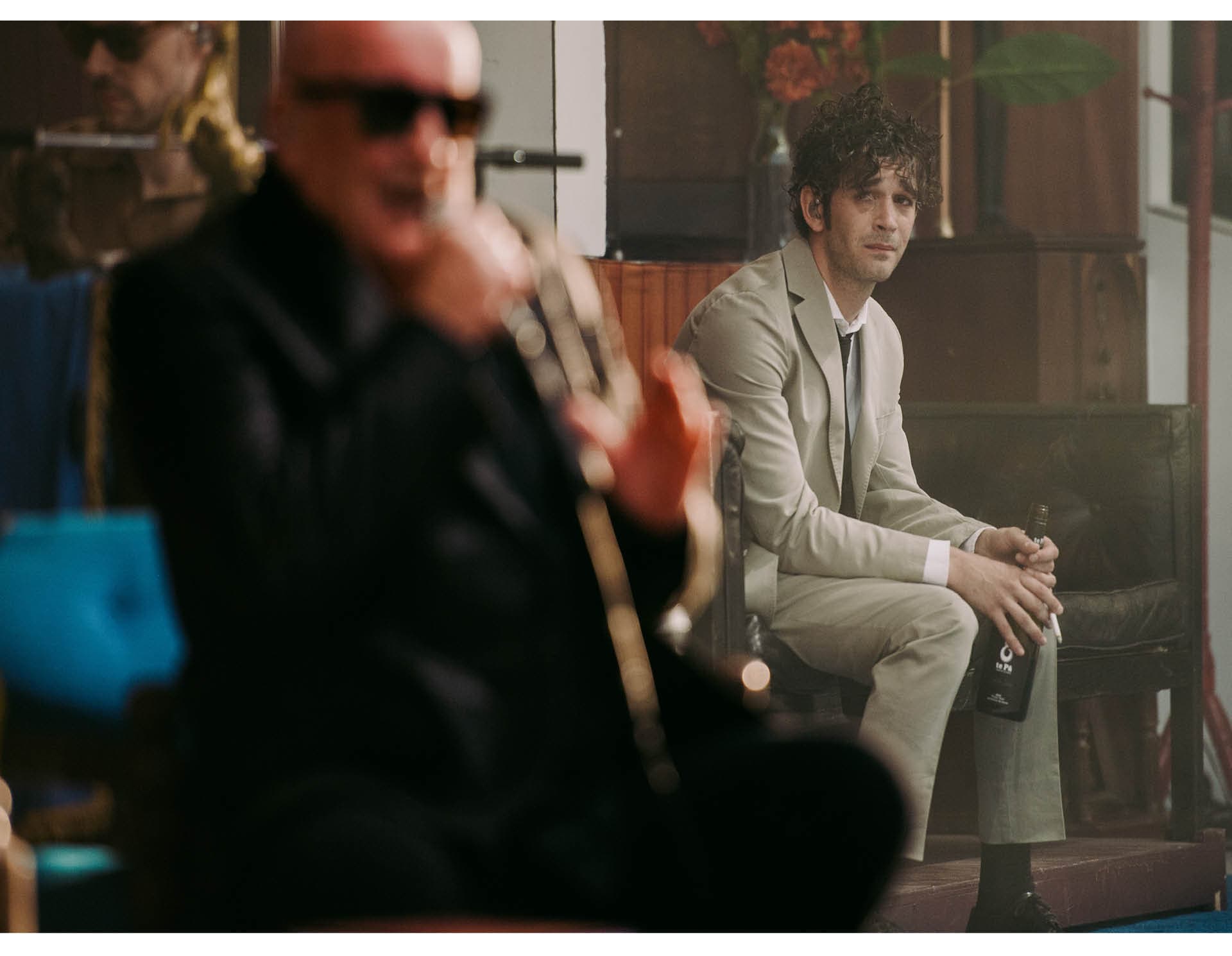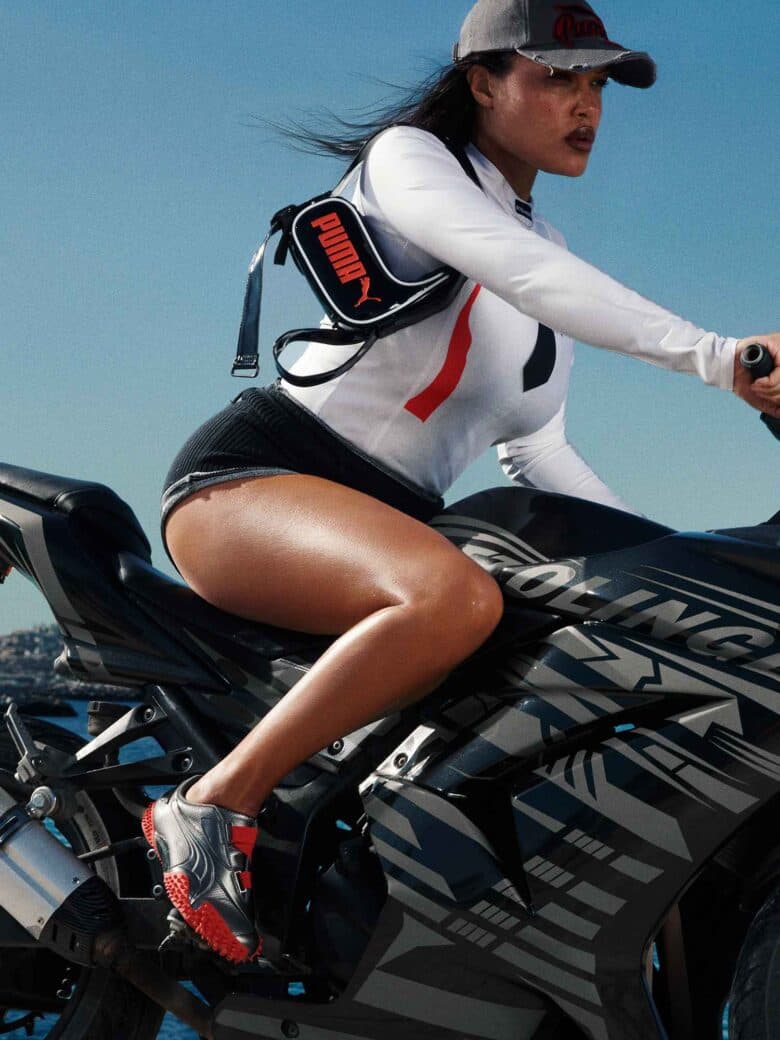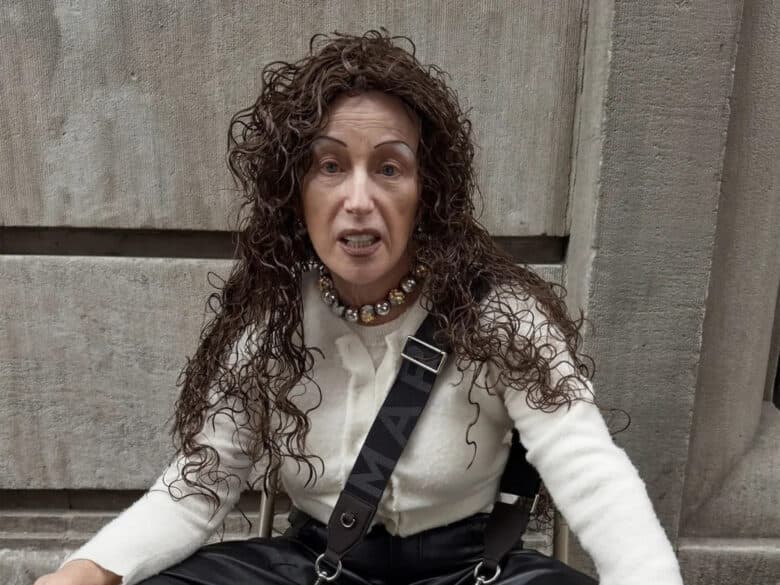Conceptual designer Tobias Rylander on bringing the vision of The 1975 to life

“It has always been very conceptual. Both The 1975 and Matthew Healy as a person is a concept with an alter ego,” Tobias Rylander says on Zoom from his home in Los Angeles. At the time of our conversation, The 1975’s biggest show to date, performing to 45,000 people in Finsbury Park on July 2nd is only days away.
Rylander has been working closely with both the band and its lead singer, Matty Healy, since the early days of their career. The renowned conceptual and lighting designer’s work with arguably the biggest, most-talked-about band around at the moment has coincided with various other collaborations that have brought together the minds of Rylander and the likes of FKA Twigs, Loreen, Acne Studios, Skepta, The XX, The Strokes, Balenciaga and much more.
“Their kind of visual identity was very rock and roll and all black and white monochromatic – they were still in that era,” Rylander says of the infancy of The 1975. “I think Matthew Healy wanted it to be very dark and hard and strong visually to compensate for songs like ‘Chocolate’ and ‘Girls’.” Rylander was introduced to Jaime Oborne, founder of Dirty Hit and The 1975’s manager. In exactly the scenario one might imagine, the pair met up at an old school rock and roll hotel in LA and “clicked immediately”. It was from that point on that the creative says he was able to materialise all of these ideas that were perfect for them as a conceptual band.
First came the rock-heavy shows and tours that laid the foundations of the band we see today. It has always been conceptual, but it feels far deeper into that world now than it ever has done before for much of the audience. With The 1975’s latest album, Being Funny in a Foreign Language, came a live show that acts almost entirely as a theatrical spectacle. It’s a bit like going to watch Edward Albee’s ‘Who’s Afraid of Virginia Woolf?’ or Tennessee Williams’ ‘A Streetcar Named Desire’ live on stage. But thematically, the performance is laced with social commentaries, be it dissecting what fame and the idea of the performer looks like now, or masculinity, or the blurred line between fact and fiction – the show takes the concepts in the songs and builds out worlds which have fervent artistic merit and undeniable virality (cue Healy taking off his shirt, doing press ups, eating raw meat and crawling through a television screen).
With The 1975’s Finsbury Park performance approaching, HUNGER sat down with Rylander to discuss working with the notoriously brilliant band, bringing creative visions to life, and Healy gnawing at a raw steak…

Hey Tobias! How’s the tour been for you? Have you been going to all the shows?
Tobias: I’m with them on and off. Whenever we add songs or change things I fly in. Or if we film it or shoot it for live broadcast then I fly in. Other than that, I have touring lighting directors going on the tour with the crew.
The 1975 as a project is probably really exciting to work on because they’ve visually changed quite a bit since those very dark shows, in that Tumblr era. How has it been interpreting their branding as they progress, and then putting that on the stage?
It has always been very conceptual. Both The 1975 and Matthew Healy as a person is a concept with an alter ego. It’s always been art installation driven. When we did that first tour together in 2013, it was very rock and roll, but it was still very artistic with sculpture and video projectors as our main lighting source where we used volumetric aerial projections, which no one had done before. Then going to using video as our main lighting source, but working a lot with the silhouette of the rockstar against or within an art piece.
It has evolved both visually and conceptually because I think Matthew started thinking about the weight of this technology. As we were growing as a conceptual live act, the whole industry did and became very tech-heavy. Parallel to that was social media, with the constant online personas bringing a whole audience to grow with it. The last tour we designed was with the knowledge that people were gonna hold their phones. We matched the colour schemes to the audience and the followers of The 1975 were starting to colourise the black and white show with their own filters and like their own kind of little artwork. A lot of them used pink so that became the artwork of the next tour. We’re evolving with the audience and what’s going on in the world, I would say.
It’s all very conceptual and Matty is quite a conceptual person as well, but he also feels quite avant-garde and a lot of stuff he does and a lot of stuff he sings about. Do you feel your mind and his mind have to think 3 steps ahead?
Absolutely. If I am three steps ahead, Matthew’s another four steps ahead. There’s a lot of times where he is asking me to do something or gives me a directive to do something that I question or that I’m really uncomfortable with. After being so tech-heavy, I was questioning the idea of doing a theatre show after doing the really stark architectural shows. Obviously he had it all figured out and it was totally the right thing to do. We’ve worked together now for 10 years so closely and intensely that we definitely co-produce all of these. I’ve also really learned how to read him and understand where he’s going, whereas it might be very abstract to someone else.
How is working on this project with The 1975 in particular differ from other projects, like with FKA Twigs for example?
So similar to be honest. They are strong-minded and identifiable characters on stage. In terms of The 1975 in comparison to other bands, there’s a lot of thought behind every detail. We work a lot with building set lists and buildings – storytelling basically. There’s a lot of communication with the audience, apart from just performing banging songs. I’d say that’s the biggest difference.

The idea of a performance has completely changed now. People can’t just go on stage and sing a few songs and then leave. It’s a spectacle and people want that experience. How would you say The 1975 are fronting this change to live music?
I think what they always succeed in is doing that entertaining for ninety to a hundred minutes, and really giving people what they want. It is different to the rest of the industry where it’s become a lot about quantity in terms of lights and scale. Everything needs to be really big and it needs to be thousands of lights. We went the opposite direction with The 1975 and tried to do something really sustainable, not just 25 to 50 trucks of lighting and video screens. We peeled back all the unnecessary pieces and put the mind and effort in the storytelling, entertaining and concept rather than the eye candy, as I would refer to it.
You said earlier about how you felt a bit sceptical about the setup as it is now having done what The 1975 had done previously. When you listened to Being Funny in a Foreign Language, what did you have in your head about how it might look initially?
Funnily enough, before I even knew or saw the campaign assets in terms of photography, I also started drifting in a more analog black and white monochromatic. When I saw the artwork of the album during the campaign, it made total sense that we were going to do something that’s very cinematic in a way. We built the set to have a background to every camera angle rather than basically entertaining, which came second. We just needed to have really good coverage and documentation of the live performance.
What were the first few things on the moodboard?
From Matthew’s side, a lot of theatre set design, a lot of photography, a lot of cinema, films, actors, performances, and even furniture. In terms of the environment, we knew that we wanted a theatrical set piece. We wanted it to be timeless and a projected memory of someone else’s history. That’s where we talked a lot about Steven Spielberg and how in his youth movies could create a completely anonymous suburban area that anyone could relate to. Even if you’re American, European, or English, everyone looks at the street view as something they could relate to, like a child at home, even if it’s an American suburb.
How did the red wine, the crawling through the TV, and the press-ups for example, build into this? Was this a surprise?
Matthew and I like to surprise each other. All the wine and the acting and the pushups and the eating of the meat, I usually don’t know much about until the show kicks off. In terms of crawling through the TV, that’s something me and Matthew love having a laugh about when we just kind of shoot ideas at each other. He didn’t know that it was actually done on stage in a functional way until he walked into rehearsal and he just fucking loved the idea of it. Same thing with the treadmill on the last tour. The more we talk about it, it becomes reality.
Wanting to see how far things can be pushed, is it a conscious decision to balance how much fun you can have whilst keeping people engaged?
Absolutely. Matthew is an incredible performer, both in acting but he’s also a terrific dancer. He masters choreography in no time. It’s not long until he has filled that space and the narrative of it with his performance.
Thank you, Tobias! See you at the next show.

